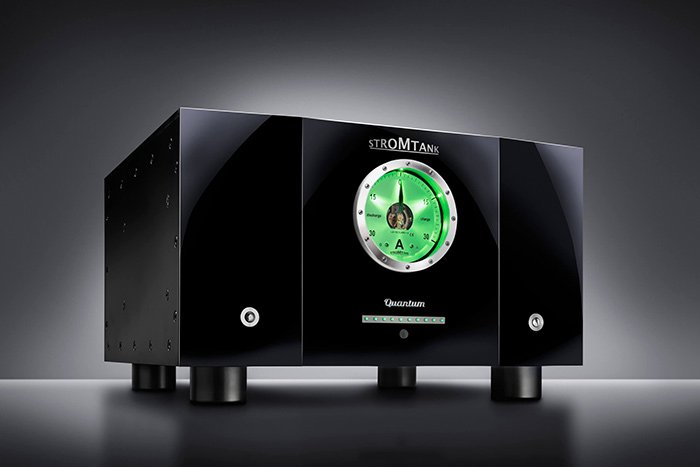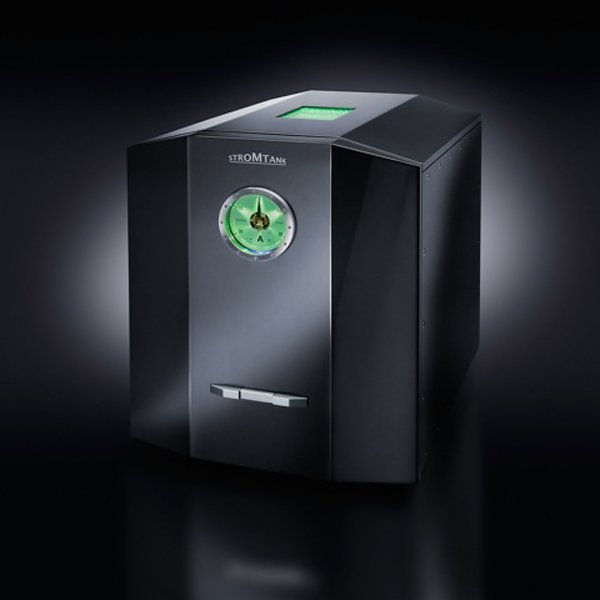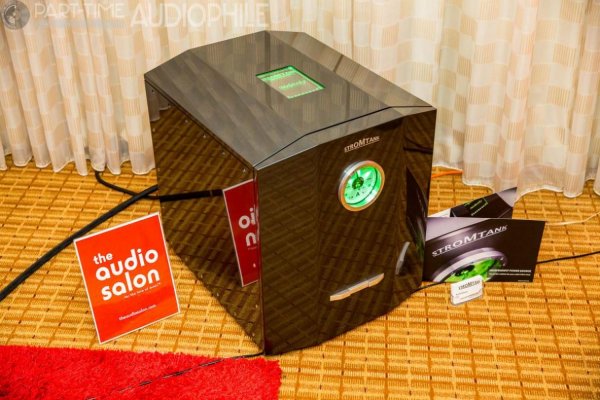The idea of powering an entire audio system with a big battery pack has waxed and waned over the years. Now we have offered to us the Stromtank device from Germany, claimed to be designed by a co-founder of MBL.
The one time I compared a preamp which can switch between an internal battery pack and the AC line I found the internal battery pack to provide smoother, "quieter" sound.
I am in the process of planning a comprehensive electrical upgrade to my listening room (JPS in-wall cable, new subpanel, new outlets, possible Torus isolation transformer, new ground system, etc.). But before I go down that road I want to consider the Stromtank.
For the price of the traditional comprehensive electrical infrastructure upgrade one could purchase one or even two Stromtanks.
The Stromtank specs state that it can output momentarily 2800VA (about 23 amps at 120 VAC). But some amps can have instantaneous current peaks higher than that current level, I think. (This is why fanatics use 100 amp isolation transformers for their systems.)
One could use a Stromtank for each channel, and a third Stromtank for the front end. All together that would provide 69 amps on a peak basis for the system, which should be enough.
One problem with battery power in the past has been the high output impedance of the battery pack output. The Stromtank claims to solve this particular problem by using many batteries, resulting in a low output impedance.
Is the Stromtank a viable or even superior alternative to the traditional audiophile electrical infrastructure upgrade?
How do we know the sine wave converter (isn't this really an inverter?) is not generating some sort of noise or distortion of its own?
Is there any reason to believe that the traditional electrical infrastructure upgrade would provide better AC to the Stromtank and thus allow the Stromtank itself to "sound" better when ultimately sending AC to the audio equipment?
The one time I compared a preamp which can switch between an internal battery pack and the AC line I found the internal battery pack to provide smoother, "quieter" sound.
I am in the process of planning a comprehensive electrical upgrade to my listening room (JPS in-wall cable, new subpanel, new outlets, possible Torus isolation transformer, new ground system, etc.). But before I go down that road I want to consider the Stromtank.
For the price of the traditional comprehensive electrical infrastructure upgrade one could purchase one or even two Stromtanks.
The Stromtank specs state that it can output momentarily 2800VA (about 23 amps at 120 VAC). But some amps can have instantaneous current peaks higher than that current level, I think. (This is why fanatics use 100 amp isolation transformers for their systems.)
One could use a Stromtank for each channel, and a third Stromtank for the front end. All together that would provide 69 amps on a peak basis for the system, which should be enough.
One problem with battery power in the past has been the high output impedance of the battery pack output. The Stromtank claims to solve this particular problem by using many batteries, resulting in a low output impedance.
Is the Stromtank a viable or even superior alternative to the traditional audiophile electrical infrastructure upgrade?
How do we know the sine wave converter (isn't this really an inverter?) is not generating some sort of noise or distortion of its own?
Is there any reason to believe that the traditional electrical infrastructure upgrade would provide better AC to the Stromtank and thus allow the Stromtank itself to "sound" better when ultimately sending AC to the audio equipment?

Last edited by a moderator:



